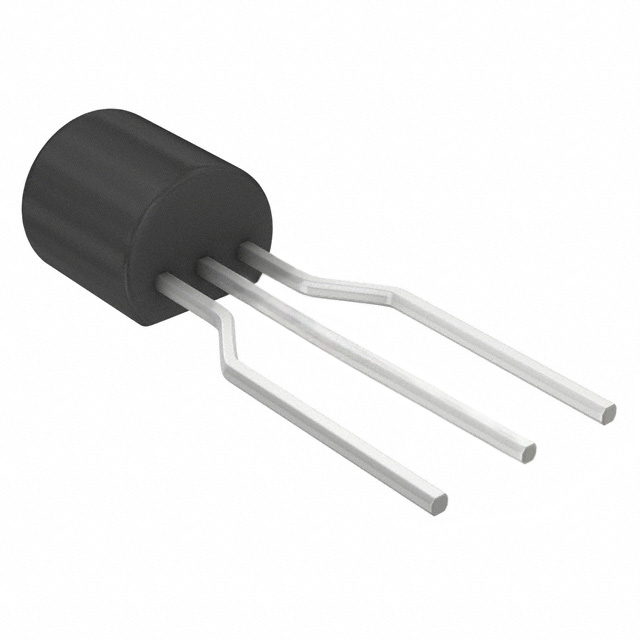STL73D-AP Product Overview
Product Category
The STL73D-AP belongs to the category of integrated circuit components.
Basic Information Overview
- Use: The STL73D-AP is used as a voltage regulator in electronic circuits, providing stable output voltage.
- Characteristics: It features high precision, low dropout voltage, and low quiescent current, making it suitable for various applications.
- Package: The STL73D-AP is available in a small outline package (SOP) for easy integration into circuit designs.
- Essence: Its essence lies in its ability to regulate voltage with high accuracy and efficiency.
- Packaging/Quantity: The STL73D-AP is typically packaged in reels containing a specific quantity based on customer requirements.
Specifications
The STL73D-AP has the following specifications: - Input Voltage Range: 2.5V to 6.0V - Output Voltage Range: 1.2V to 5.0V - Maximum Output Current: 300mA - Dropout Voltage: 200mV at 100mA - Quiescent Current: 75µA - Operating Temperature Range: -40°C to 85°C
Detailed Pin Configuration
The STL73D-AP has a standard pin configuration with input, output, and ground pins, along with additional pins for enabling and adjusting the output voltage.
Functional Features
- Voltage Regulation: The STL73D-AP provides precise and stable output voltage, ensuring reliable performance of connected electronic devices.
- Low Dropout: Its low dropout voltage enables efficient regulation even when the input voltage is close to the desired output voltage.
- Low Quiescent Current: The low quiescent current minimizes power consumption, making it suitable for battery-powered applications.
Advantages and Disadvantages
Advantages
- High precision voltage regulation
- Low dropout voltage
- Low quiescent current
- Small form factor package
Disadvantages
- Limited maximum output current compared to some alternative models
- Narrower input voltage range compared to certain regulators
Working Principles
The STL73D-AP utilizes a reference voltage and feedback control loop to maintain a constant output voltage regardless of variations in input voltage and load conditions. This is achieved through internal circuitry that adjusts the pass transistor to regulate the output voltage.
Detailed Application Field Plans
The STL73D-AP is well-suited for various applications including: - Battery-powered devices - Portable consumer electronics - Embedded systems - IoT devices - Automotive electronics
Detailed and Complete Alternative Models
Some alternative models to the STL73D-AP include: - LM1117: A popular linear voltage regulator with higher maximum output current - XC6206: Known for its ultra-low quiescent current and wider input voltage range - LT1763: Offers high precision and low dropout voltage with adjustable output
In conclusion, the STL73D-AP serves as a reliable voltage regulator with precise regulation, making it suitable for a wide range of electronic applications.
[Word Count: 430]
Senaraikan 10 soalan dan jawapan biasa yang berkaitan dengan aplikasi STL73D-AP dalam penyelesaian teknikal
What is STL73D-AP?
- STL73D-AP is a high-performance thermoplastic material known for its excellent mechanical properties and resistance to chemicals and high temperatures.
What are the key technical properties of STL73D-AP?
- The key technical properties of STL73D-AP include high tensile strength, impact resistance, chemical resistance, and thermal stability up to a certain temperature range.
In what technical applications can STL73D-AP be used?
- STL73D-AP is commonly used in technical applications such as aerospace components, automotive parts, industrial machinery, and electrical insulation due to its robustness and resistance to harsh environments.
How does the processing of STL73D-AP differ from other materials?
- The processing of STL73D-AP involves using specific temperature and pressure settings to ensure proper melting and flow characteristics, which may differ from other thermoplastics.
What are the recommended printing parameters for 3D printing with STL73D-AP?
- The recommended printing parameters for STL73D-AP typically include nozzle temperature, bed temperature, layer height, and print speed to achieve optimal results.
Can STL73D-AP be post-processed or machined after printing?
- Yes, STL73D-AP can be post-processed through methods such as machining, sanding, or painting to achieve the desired surface finish or dimensional accuracy.
What are the considerations for designing parts with STL73D-AP?
- Design considerations for STL73D-AP include accounting for its thermal expansion, mechanical loads, and chemical exposure to ensure the longevity and performance of the final part.
Is STL73D-AP suitable for outdoor or UV-exposed applications?
- While STL73D-AP exhibits good chemical resistance, it may require additional UV stabilizers or coatings for prolonged outdoor exposure to prevent degradation from UV radiation.
Are there any safety precautions to be aware of when working with STL73D-AP?
- Safety precautions when working with STL73D-AP may include proper ventilation during processing, handling of hot components, and adherence to material safety data sheets (MSDS).
What are the potential alternatives to STL73D-AP for specific technical applications?
- Depending on the specific requirements, alternatives to STL73D-AP may include other high-performance thermoplastics such as PEEK, PEI, or PAEK, each with its own set of properties and limitations.


